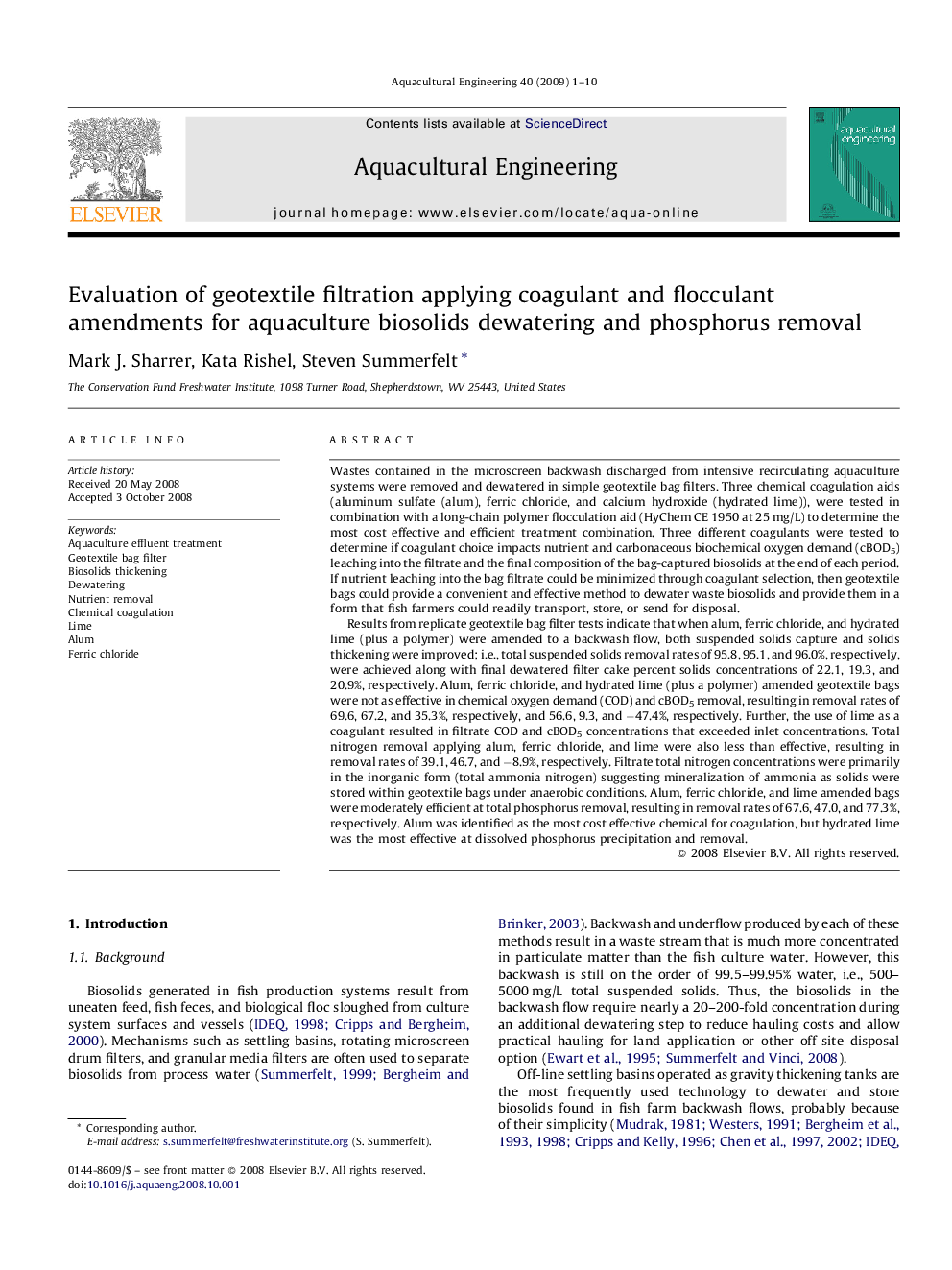| Article ID | Journal | Published Year | Pages | File Type |
|---|---|---|---|---|
| 6381537 | Aquacultural Engineering | 2009 | 10 Pages |
Abstract
Results from replicate geotextile bag filter tests indicate that when alum, ferric chloride, and hydrated lime (plus a polymer) were amended to a backwash flow, both suspended solids capture and solids thickening were improved; i.e., total suspended solids removal rates of 95.8, 95.1, and 96.0%, respectively, were achieved along with final dewatered filter cake percent solids concentrations of 22.1, 19.3, and 20.9%, respectively. Alum, ferric chloride, and hydrated lime (plus a polymer) amended geotextile bags were not as effective in chemical oxygen demand (COD) and cBOD5 removal, resulting in removal rates of 69.6, 67.2, and 35.3%, respectively, and 56.6, 9.3, and â47.4%, respectively. Further, the use of lime as a coagulant resulted in filtrate COD and cBOD5 concentrations that exceeded inlet concentrations. Total nitrogen removal applying alum, ferric chloride, and lime were also less than effective, resulting in removal rates of 39.1, 46.7, and â8.9%, respectively. Filtrate total nitrogen concentrations were primarily in the inorganic form (total ammonia nitrogen) suggesting mineralization of ammonia as solids were stored within geotextile bags under anaerobic conditions. Alum, ferric chloride, and lime amended bags were moderately efficient at total phosphorus removal, resulting in removal rates of 67.6, 47.0, and 77.3%, respectively. Alum was identified as the most cost effective chemical for coagulation, but hydrated lime was the most effective at dissolved phosphorus precipitation and removal.
Related Topics
Life Sciences
Agricultural and Biological Sciences
Aquatic Science
Authors
Mark J. Sharrer, Kata Rishel, Steven Summerfelt,
